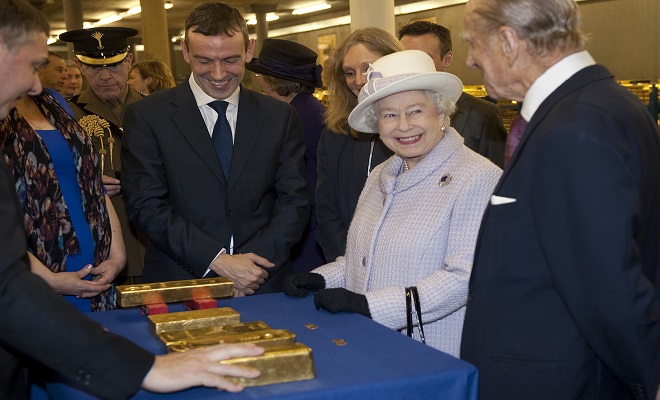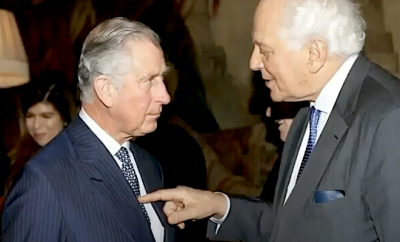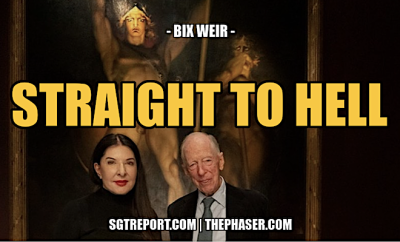 closemag.fr
closemag.fr
Metals
London Gold Fix Closed – Sign of Drastic Changes the World Financial System Is To Go Through
by Valentin Katasonov, Strategic Culture.org:
The closer of London Gold Fix(LGF) on March 20 is big news. The first London gold fixing was performed in 1919; it had a short way to go till its anniversary. The system of its functioning was simple enough. A number of leading participants started a fixing process to reach a balance between supply and demand to set the price. The gold fixing provided a recognized rate that was used as a benchmark for pricing the majority of gold products and derivatives throughout the world’s markets. There were five participating banks and market makers that made up London Bullion Market Association – LBMA. London Gold Market Fixing Ltd. exercised the administrative control.
For many years LGF was perceived to be an ideal instrument for fixing the gold price on the world market, especially for individual contracts and derivatives (paper gold). The rates were used for evaluating monetary gold reserves and liabilities pegged to the precious metal (for instance, bank deposits denominated in gold). The drawbacks of the system were hushed up, no matter more and more questions were being raised, especially during the recent 10-20 years.
The Bretton Woods system disappeared in the 1970s. Gold stopped being a monetary metal to become a normal commodity. It would have been logical to trade gold with its price fixed as if it were an ordinary operation at commodity exchange. In recent years LGF looked like an anachronism, an old fashioned structure to add to or, to some extent, substitute ordinary markets trading non-ferrous and precious metals.

The most perspicacious experts noticed that LGF was an ideal instrument for the Rothschilds to control the gold market. As is known, the gold standard was created by Rothschilds in the XIX century. After Napoleonic wars the family got hold of major part of European gold, so the gold standard made it fabulously rich guaranteeing stable demand for the precious metal. The Rothschilds did not sell it to central banks or treasuries of other countries. Instead they granted gold credits. The First World War put an end to the functioning of gold standard mechanisms. The Rothschilds wasted no time to react. In 1919 they created LGF to control the world gold market through London gold fixing.
The Rothschilds -controlled N M Rothschild & Sons was the leading bank of the five. It was founded at the beginning of XIX century by Nathan Rothschild. Other members of «golden five» were related to the Rothschilds by invisible ties. It can be said that LGF was the Rothschilds ’ creature. In 2003 N M Rothschild left gold fixing but it did not mean the family left the business. It controlled LGF behind the scenes. By that time there were many frauds and manipulations affecting the functioning of the market; the situation could have gone out of control. There was a risk of world-wide scandal. To avoid involvement the «financial geniuses» the Rothschilds decided to go into the shadows. There were a lot of interesting things happening in the world of gold trading. The Rothschilds -controlled media did it best to hush it all up. For instance, the information on tungsten operations hit the pages only ten years after the fact was discovered.

The elimination of LGF is part of big game played by the «money bosses» – the Rothschilds and Rockefellers (the both are the leading shareholders of US Federal Reserve System). Gold is what the Rothschilds are after, while the Rockefellers rely on the dollar – the world currency the Federal Reserve System issues. The correlation of forces (between the Rothschilds sand the Rockefellers who are partners and competitors at the same time) is defined by the balance between the dollar and gold. It’s a well-known fact that since some time ago the gold has been greatly underestimated. The price has never returned to the peak reached in 1980 ($850 per troy). This is a comparable price. The nominal price has gone up exceeding $1000 since a long time ago. At first glance, one should come to conclusion that the Rockefellers won the battle and weakened the position of the Rothschilds . But there is a great possibility that this is just a trick on the part of Rothschilds trying to turn the temporary retreat into a strategic win to defeat the Rockefellers.
There are many indirect signs that the Rothschilds played the game of lowering the gold price to automatically strengthen the dollar. It’s not financial masochism. The recent twenty years the Rothschilds used different shady and criminal schemes to buy out the precious metal, so, naturally, they needed the lowest price possible. London gold fixing functioned to carry out this task. They got gold from everywhere they could. Central banks and treasuries were the main sources, especially the United States Treasury. According to official data, there are 8100 tons of gold stored in Fort Knox. The storage has not been audited for sixty years now. According to my estimates, the probability of finding eight thousand tons (the figure offered by the US Federal Reserve System and the Department of Treasury) of gold there is much less than 1%. Former congressman Ron Paul, who is very critical of US financial authorities, believes that the probability is even lower.
There are many more examples of gold manipulations with the participation of Federal Reserve System, the US Department of Treasury, the Bank of England, the LGF «golden five», many banks of Wall Street and London City etc. At the beginning of the 2010s, there was enough discrediting evidence to make financial bodies of the United States, Great Britain and the European Union react somehow. After the end of the first wave of financial crisis the «untouchable» banks of Wall Street, London City and continental Europe came under investigation to trace manipulations. There were loud scandals, for instance the Libor scandal. There was a series of fraudulent actions connected to the Libor (London Interbank Offered Rate) and also the resulting investigation and reaction. The Libor is an average interest rate calculated through submissions of interest rates by major banks in London. The scandal arose when it was discovered that banks were falsely inflating or deflating their rates so as to profit from trades, or to give the impression that they were more creditworthy than they were. The courts handed down sentences severe enough and the banks had to pay billions in fines and compensations. The investigations of possible fraudulent actions were postponed for a long time (the gold market is a sacred place in the world financial system) but finally the time came to examine the operations of LGF.
Last year it became evident that the fat was in the fire. The nerve of a bank making up the «golden five» failed it. Deutsche Bank tried to sell its place in LGF but no one wanted to buy it. In August 2014 the bank left LGF in fear. Now they were four instead of five with Scotia Mocatta, HSBC, Societe Generale, Barclays Capital left. Before that another financial regulator – the Financial Conduct Authority (FCA) – had launched an investigation against Barclays Capital. The British authorities tried to hush the scandal up with the help of a ridiculously small sum of around 30 billion euros Barclays was made pay as a fine. The financial bodies of Switzerland and Germany launched inquiries of their own. Besides the LGF participating banks, they also investigated the activities of other big actors on the market of precious metals (gold, silver, platinum). Those actors had close ties to LGF banks and central banks of some countries, including Bank for International Settlements (BIS). The information is explosive. To my mind, it prompted the closure of gold fixing.
Somehow, the fraudulent schemes practiced by the «big five» (to later become «big four) are often called «manipulations with gold prices». True, the manipulations did take place. For instance, they regulated supply and demand for precious metals. The 2012-2014 investigation of fraudulent schemes practiced in relation to currency rates shows that the regulation of supply and demand did take place. Then why not spread this experience on gold? But the price manipulation was not the main wrongdoing. The major fraud was establishing monopoly on insider information related to prices. The process of prices fixing could last for a few minutes to a few hours. Getting the information of the price just a few seconds before its official announcement enabled to make a huge profit, especially in view of the fact that many speculators like to work with ‘paper gold» (its turnover exceed many times the turnover of physical gold). There is a great probability the Rothschilds themselves made money by selling the insider information to the bodies under their control.
It’s hard to predict the further situation creep on the world gold market. The available information shows that the new system of price fixing looks like the most transparent auction with great number of participants. They say Chinese banks and companies will become the leading actors of «gold fixing with broad participation». If so, the gold price will rapidly climb. This process could be regulated by preventing sky high hikes.
Many things about LGF activities are still not known. One can only guess. One of the guesses says the gold has already gone to the Rothschilds ’ storage. They don’t need the mechanism of lowering prices anymore. The Rothschilds were the main driving force behind the LGF closure. There is some logic here – the sooner the bucket shop called LGF is closed, the less chances investigators have to get to the bottom of fraudulent schemes practiced by «financial geniuses».
There is another version. Not all the money has been transferred and the risk of leak revealing dirty tricks practiced on gold market has grown. The LGF closure was an emergency action to destroy the traces.
The third guess. The closure could be a result of bickering between the Rothschilds and the Rockefellers. The Rockefellers decided to strike at the soft underbelly of the Rothschilds – LGF. It was known as early as the beginning of 2015 that LGF was to stop functioning. The issue could have been gradually soft-pedalled but, all of a sudden, the US Department of Treasury launched a large-scale investigation related to the possible precious metals market machinations. At least ten banks were suspected: Barclays, JPMorgan Chase, Deutsche Bank, HSBC, Credit Suisse, UBS, Goldman Sachs, Societe Generale, Canadian Nova Scotia и South African Standard Bank. Three banks from the list are under strong influence of the Rothschilds, especially Chase. In any case the closure of London gold fixing is a sign of great changes the world financial system is to undergo.
Read More @ Strategic Culture.org












